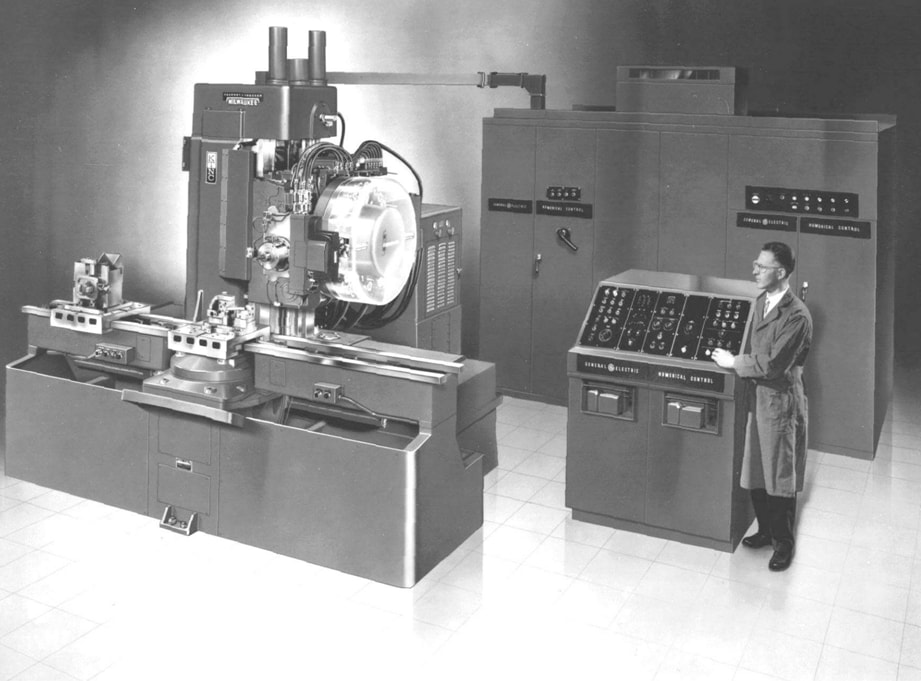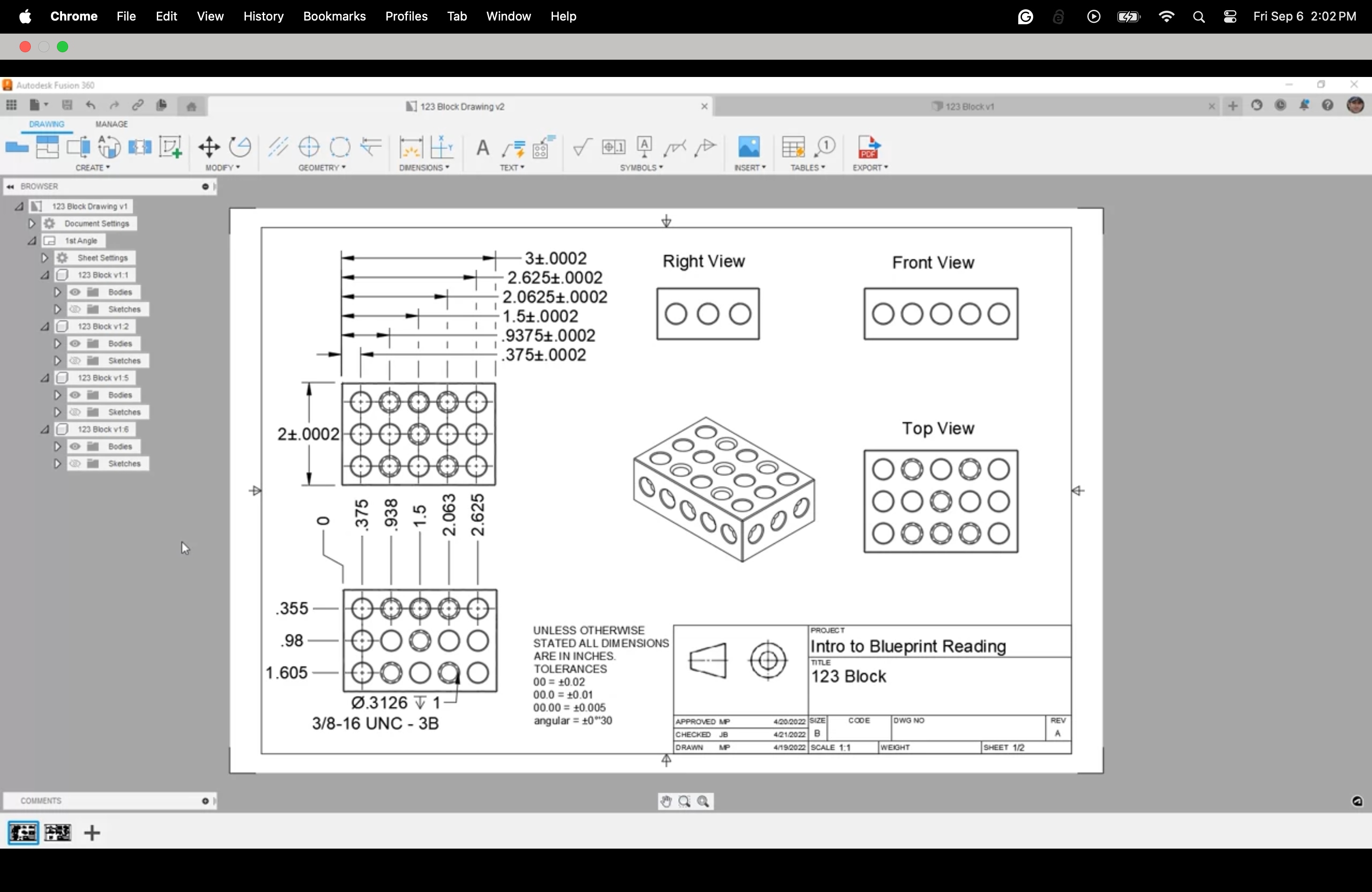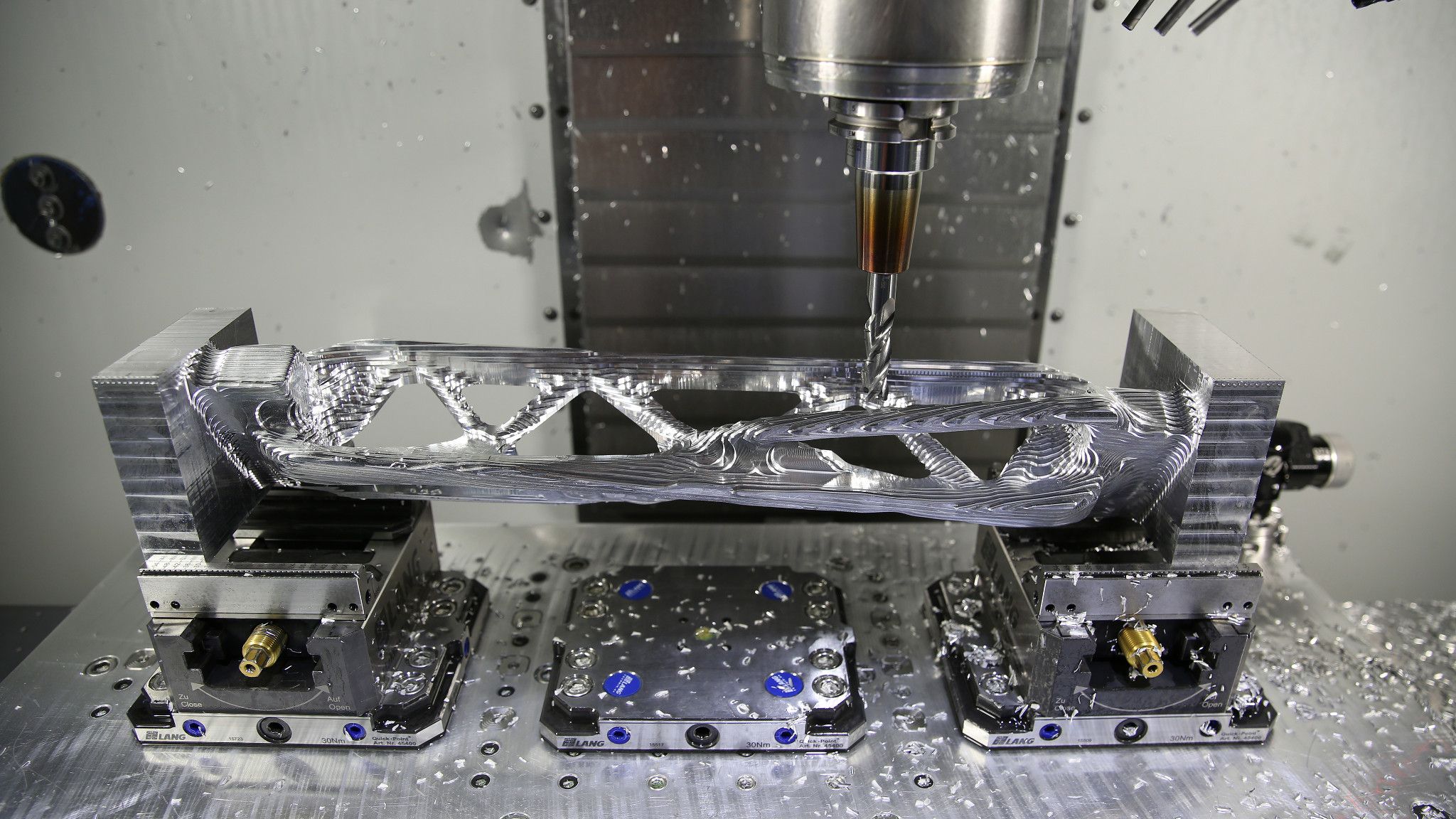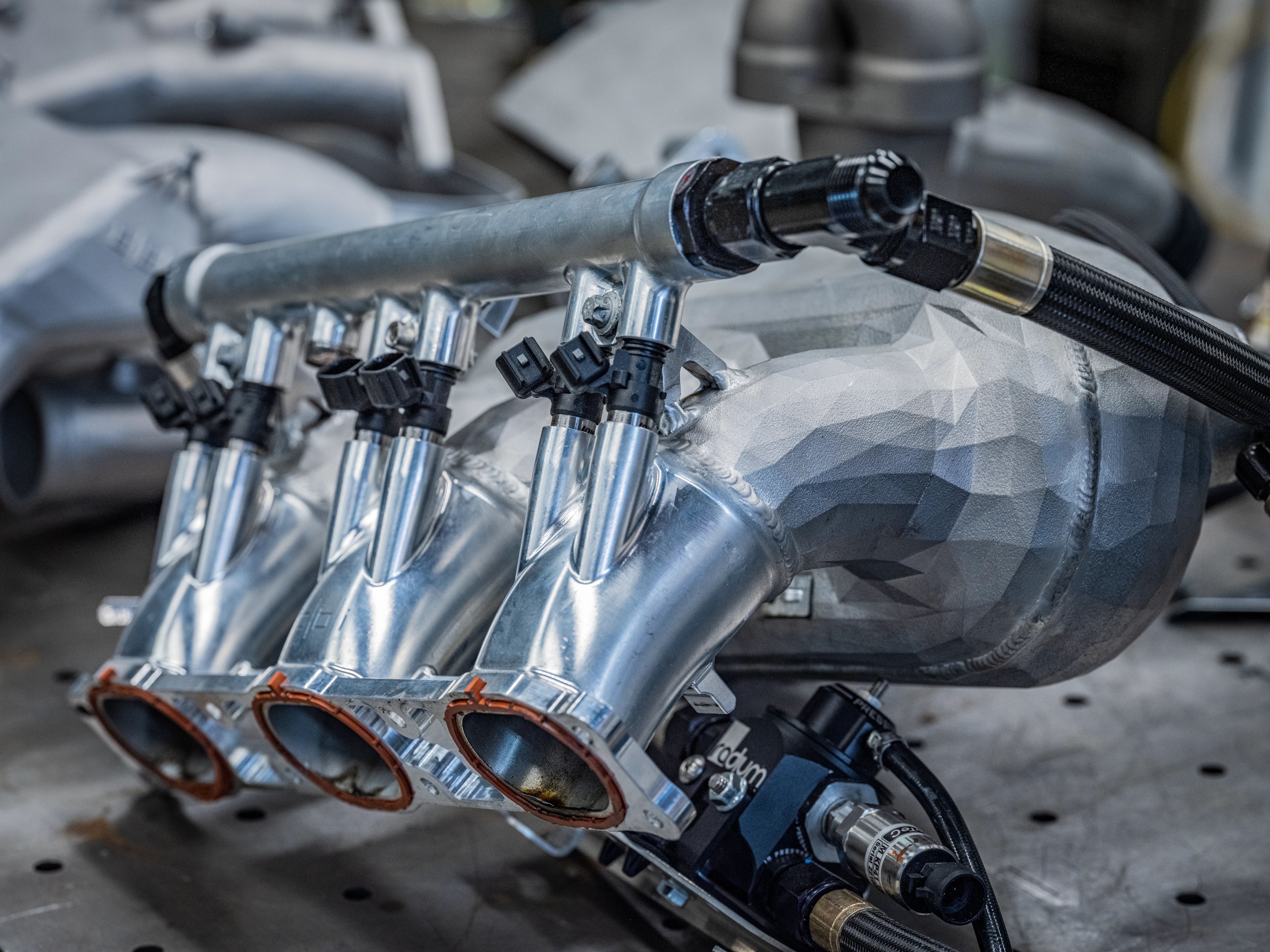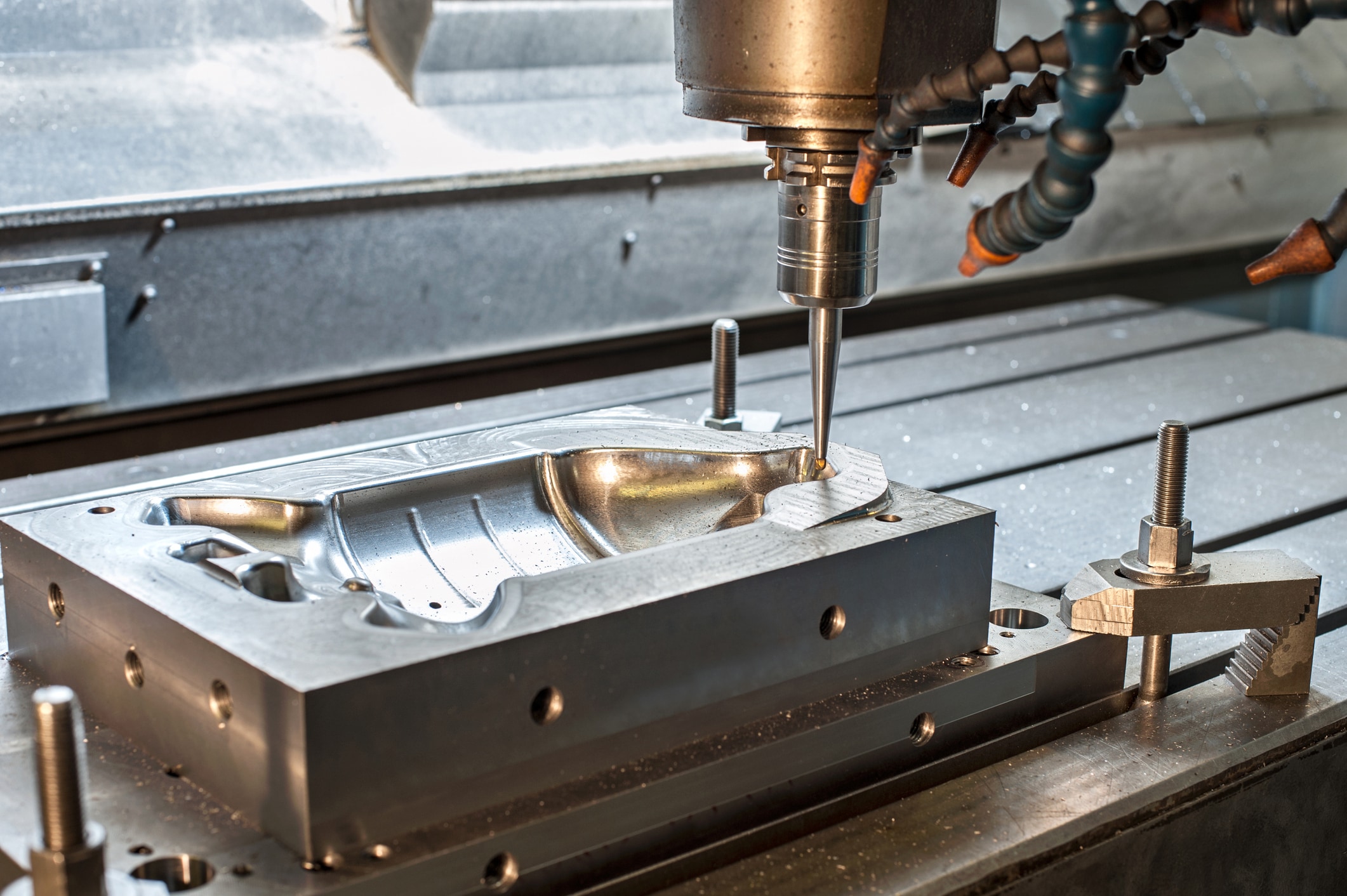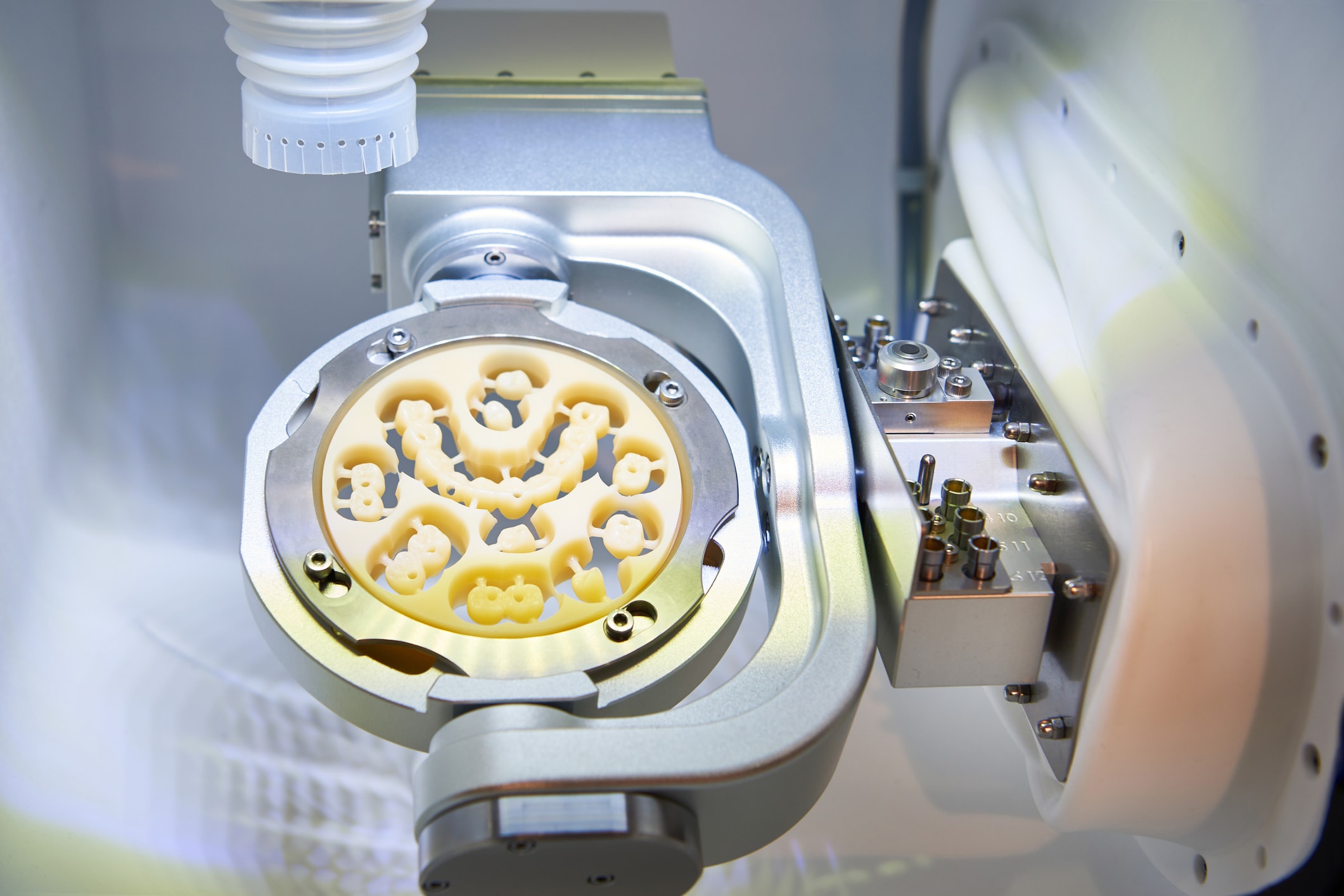& Construction

Integrated BIM tools, including Revit, AutoCAD, and Civil 3D
& Manufacturing

Professional CAD/CAM tools built on Inventor and AutoCAD
Precision machining describes a variety of subtractive manufacturing processes performed with specialized tools and computer numerical control (CNC) machines to create complex parts with the tightest tolerances that the most demanding industries need.
Modern advanced precision machining refers almost exclusively to a class of CNC machining that exceeds standard CNC operations to produce complex parts with very tight tolerances. Standard CNC machining of parts produces tolerances—acceptable deviations from the CAD model’s dimensions—of about (0.12 to 0.2 mm). Precision machining, on the other hand, can achieve much tighter tolerances, as close as 0.0001 inches (0.0025 mm).
Precision machining’s higher standards stem from the demands of high-performance industries such as aerospace, automotive, medical and surgical devices, robotics, electricity generation, electronics, and more. These industries often manufacture intricate parts and assemblies that need to fit and function together with the greatest level of reliability.
While precision machining can be done on standard 3-axis CNC machines, it frequently makes use of multi-axis machines, which are capable of greater accuracy and detail. Multi-axis CNC machines typically have four, five, or more controlled axes and are ideally suited for precision machining. They can perform simultaneous processes with less human setup and repositioning, making precision machining operations reliably repeatable at scale.
Precision CNC machined parts usually don’t require additional polishing or finishing, which eliminates costly and inconsistent manual processes. They produce an aesthetic quality free of blemishes and imperfections, which makes them valuable for visible product parts where impeccable appearance matters. Suppliers may be attracted to making precision machined parts because their high quality could fetch a higher price.
5-axis CNC machines typically consist of a cutting tool that can travel across the X, Y, and Z axes plus rotary axes that allow the cutting tool to be reorientated. This has many benefits, including:
As parts can be machined in a single setup, there’s less reliance on a human operator to transfer the part from one fixture to another. This can help increase productivity and reduce production costs.
Parts can be machined with fewer toolpaths and shorter cutting tool assemblies. This reduces the likelihood of surface imperfections caused by cutter vibration or deflection and can remove the need for polishing.
The rotary axes of a 5-axis machine allow complex features to be produced that would be hard or impossible to create with 3-axis machining, enabling businesses to offer a higher-value service to end customers.
Inventor John T. Parsons developed the first numerical control machine operated by punch cards—the predecessor to modern precision CNC machines—in the 1950s. Image courtesy of CMS Industries.
Precision machining is an offshoot of subtractive manufacturing, so its origins can be traced back thousands of years. Subtractive manufacturing machines, which create objects by removing material from a larger workpiece through processes such as cutting, grinding, and drilling, were first used in ancient times. There is evidence of wood-turning lathes being used in ancient Egyptian and Mycenean Greek cultures more than 3,000 years ago. In China, meanwhile, rotary lathes were used by the 5th century BCE.
With the Industrial Revolution in the 18th century, mass production for metal parts, interchangeable parts, and fasteners became the standard, and by the 1940s and 1950s, numerical control was added to manufacturing machines via data continuously fed from punched paper tape. Machine numerical control evolved rapidly in concert with the development of analog and digital computing.
Today’s CNC machines work off of sophisticated files derived from computer-aided manufacturing (CAM) software, which precisely controls CNC machine behavior. As machines and the computers that control them became more advanced, it became possible to make parts to a specific design with an extremely high level of accuracy, and thus precision machining was born.
Get Inventor + AutoCAD + Autodesk Fusion + more—Professional-grade tools for product development and manufacturing planning.
Unlock additional capabilities for 3 to 5-axis CNC machining, sheet-based nesting and fabrication, and metals-based additive manufacturing.
Precision advanced machining offers many benefits for industries like aerospace, robotics, automotive, and surgical device manufacturers that require complex parts to fit and function together flawlessly.
Tight tolerances are the name of the precision machining game. With specialized tools and processes, precision machining can achieve tolerances as close as ±0.0001 inch (0.0025 mm) from a 3D model’s ideal dimensions.
Besides achieving the industry’s tightest tolerances, precision manufacturing can also reliably replicate those results at scale, making each part in a run as close to identical as possible.
While precision machining is used for prototypes and custom, small-batch parts, it can also fulfill high-volume orders to the same exacting specifications.
Precision machining works with a wide range of materials—many types of metals, plastics, and composites, as well as wood and glass—on a variety of milling, turning, grinding, drilling, laser, and multi-axis CNC machines.
Thanks to highly automated and accurate processes, precision machining contributes to a factory’s productivity with high production speeds, efficient use of the workforce, and low defect rates.
With highly automated, computer-controlled precision CNC machining, workers stay clear of dangerous cutting and grinding operations and can focus on valuable higher-level skills like CNC programming.
One advancement that made precision machining possible was the development of computer-aided design (CAD) software that allowed designers to specify very precisely how a part or item should be produced. CAD/CAM (computer-aided manufacturing) software makes it possible to send that design straight to the precision CNC machine, ensuring it is brought to life with the utmost accuracy. Autodesk Fusion is a fully integrated CAD/CAM software that helps designers and manufacturers seamlessly create and produce precision-machined products.
In order to ensure passenger and pilot safety, aircraft parts must be made to highly stringent specifications with virtually no room for error. Precision machining for aerospace makes extensive use of aluminum for fuselage components, as well as alloys like titanium that require specific programming approaches.
Today’s cars are highly intricate and complex machines, and as such many of their engine and chassis parts must be made to a high degree of accuracy using advanced precision machining. Precision machining for the automotive industry involves a wide array of metals, including aluminum, steel, and alloys, as well as thermoplastics and composites.
With consumer and commercial electronics getting smaller and smaller, the race is on to make parts that are ever more miniature. Precision machining of parts makes this possible using a variety of materials—including metals, plastics, and composites—specifically selected for properties like conductivity, heat resistance, and weight.
Molds, tools, and dies are essential components of the manufacturing industry. Precision machining allows manufacturers to create molds and dies for intricate parts and assemblies from a wide range of materials including hardened tool steel, ceramics, copper, and graphite.
The medical industry relies on precision machining to enable the creation of prosthetics, implants, surgical instruments, and other medical devices to exacting standards. These products make extensive use of non-toxic materials that will not react once in contact with living tissue, such as titanium, ceramics, and complex polymers like polyethylene.
NERC PRECISION ENGINEERING LTD
A precision component manufacturer invested in Autodesk Fusion to drive its range of 3- and 5-axis CNC machines, helping the business shorten project delivery time and win more business in the aerospace, medical, and automotive sectors.
ODICO
Odico created its 6-axis Drill Mate robot for the advanced precision machining needed to fix 12-ton aluminum blades to the massive wind turbines vital to Denmark’s electricity generation.
Image courtesy of Odico
PEMBREE
UK-based Pembree uses precision machining and automation within Fusion to design and make a range of mountain bike components.
This industry-recognized course teaches the practical skills for 2.5-axis precision machining using Fusion 360 CAD/CAM software.
Discover the four most common CNC machining methods, including the multi-axis milling techniques used in precision machining.
Learn how production turning and Swiss machining can churn out large volumes of small, highly complex CNC machined parts more accurately.
Software for advanced manufacturing lets you make very complex parts with the best results when practicing precision machining.
Find out how to simplify creating high-quality machine code for precision CNC machines with Fusion’s advanced computer-aided manufacturing (CAM) capabilities.
Learn more about instructing CNC machines with G-code and how software like Fusion can help you generate the G-code needed to produce your parts.
CNC machining and precise machining are related advanced manufacturing techniques, but they are not exactly the same. The key difference comes down to tolerances—the maximum amount that a produced part’s dimensions can vary from the design specs and still be viable.
With standard CNC machining, the tolerances vary from about 0.005 to 0.008 inches (0.12 to 0.2 mm). However, for precision machining, which is crucial to performance industries like aerospace, automotive, and medical, the tighter tolerances are as close as 0.0001 inches (0.0025 mm). Advanced precision machining usually uses CNC (computer numerical control) machines, but its tighter tolerances distinguish it from standard CNC machining.
Many processes fall under the banner of precision machining, and all of them are designed for extremely high accuracy and tight tolerances as close as 0.0001 inch (0.0025 mm).
Advanced precision machining processes include CNC milling and turning using cutting tools, grinding and honing using abrasive tools, drilling, and laser cutting. Waterjet cutting is also a very accurate process, but its tolerances of around ±0.002 inch (0.05 mm) arguably do not qualify it for the precision CNC machining category.
Precision machining can use a large selection of materials, including metals (aluminum, brass, bronze, copper, titanium and other alloys, carbon steel, stainless steel, tool steel), plastics (acrylic, nylon, polycarbonate, PVC), ceramics (alumina, silicon carbide, zirconia), composites (carbon fiber-reinforced polymers, glass fiber-reinforced polymers), and certain hardwoods and softwoods. These materials all have unique characteristics but also place widely different challenges on the CNC machinist of selecting the correct cutting tool, coolants, machine type, and fixture design.


